Received my +200 ordered Dutch herring barrels today.
I had found someone via via via in Madrid who wanted to make the barrels to their specific size.
A Dutch herring barrel (harington) had different sizes. The holds and hatches of the luggers are also tailored to those dimensions.
They had a length of 725 mm, a largest diameter of 535 mm and a bottom diameter of 425 mm. With 2x2 hoops.
In scale 1:50 this becomes 14.5 x 10.7 x 8.5 mm:
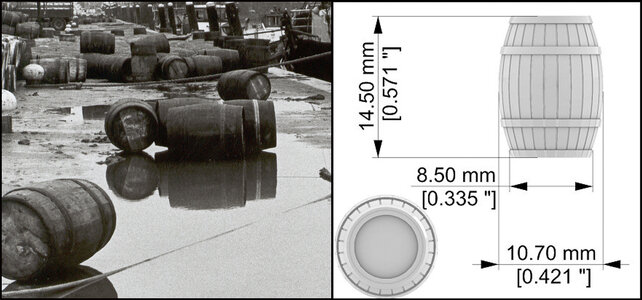
I have made a rough estimate of the number of barrels that I think I will use in the furnished hold in the port part.
The Balder had 2x9 spaces in the hold in which the barrels were stacked. Just 2 previously posted drawings:
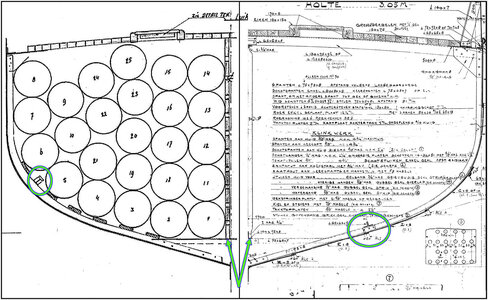
The largest frame has 25 barrels stacked on each side.
2x9xx25=450. That's 225 per side.
I'm not going to fill all the compartments, but there will be several on deck as well. So more than enough.
The Madrileen printed slightly more. He equipped his printing floor with barrels as optimally as possible and ended up with 234 pieces:
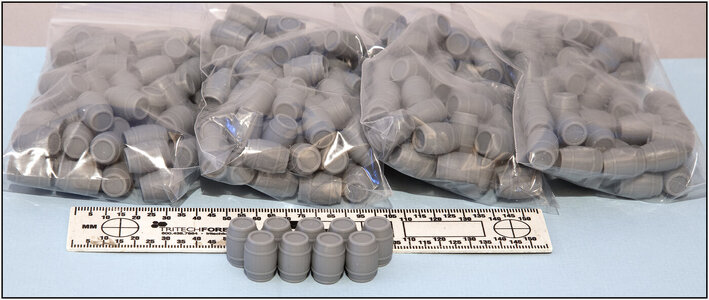
He printed them from gray resin so that they are very sleek and detailed:
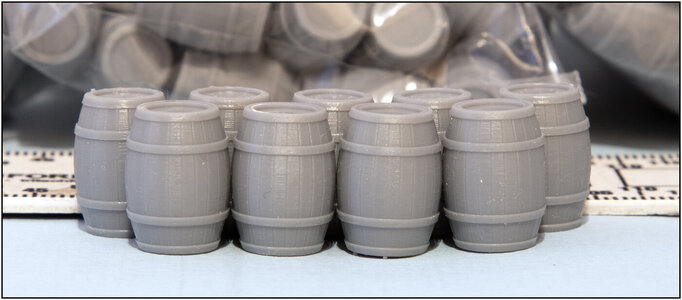
With nice thin seams between the staves.
Again, thinking a few steps ahead:
I am not going to use the barrels yet, but I do need them to adjust the position of the longitudinal profiles in the hold, in the bilge. I have circled them in the drawing above. They are in different places. I'm going to use the position of the left drawing, because it was included with the drawings of the 1st restoration. The drawing on the right is from 1911 of the yard that built the lugger.
The drawings also show the uprights, see arrows, that form the partition in the longitudinal direction. They are on either side of keelson. These are profiles with 10 longitudinal beams. This is different from what is shown in the old photo of the hold with the mast tube + cossing, where struts are visible. But that photo was of the situation when the Balder arrived at the Maritime Museum and had therefore already undergone a few changes. The Balder in its current situation also has these struts. But the hold is now a meeting/exhibition space and must support the deck.
In both cases I can afford to take some freedom (AL-FI) there without detracting from the current situation.
Regards, Peter






 we all seen you last build.
we all seen you last build. About that
About that 




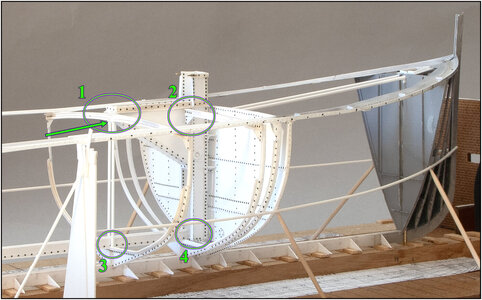
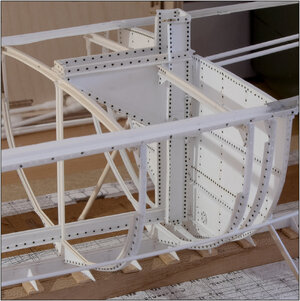
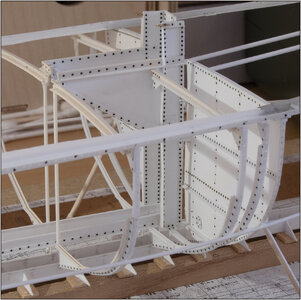
 ...
...